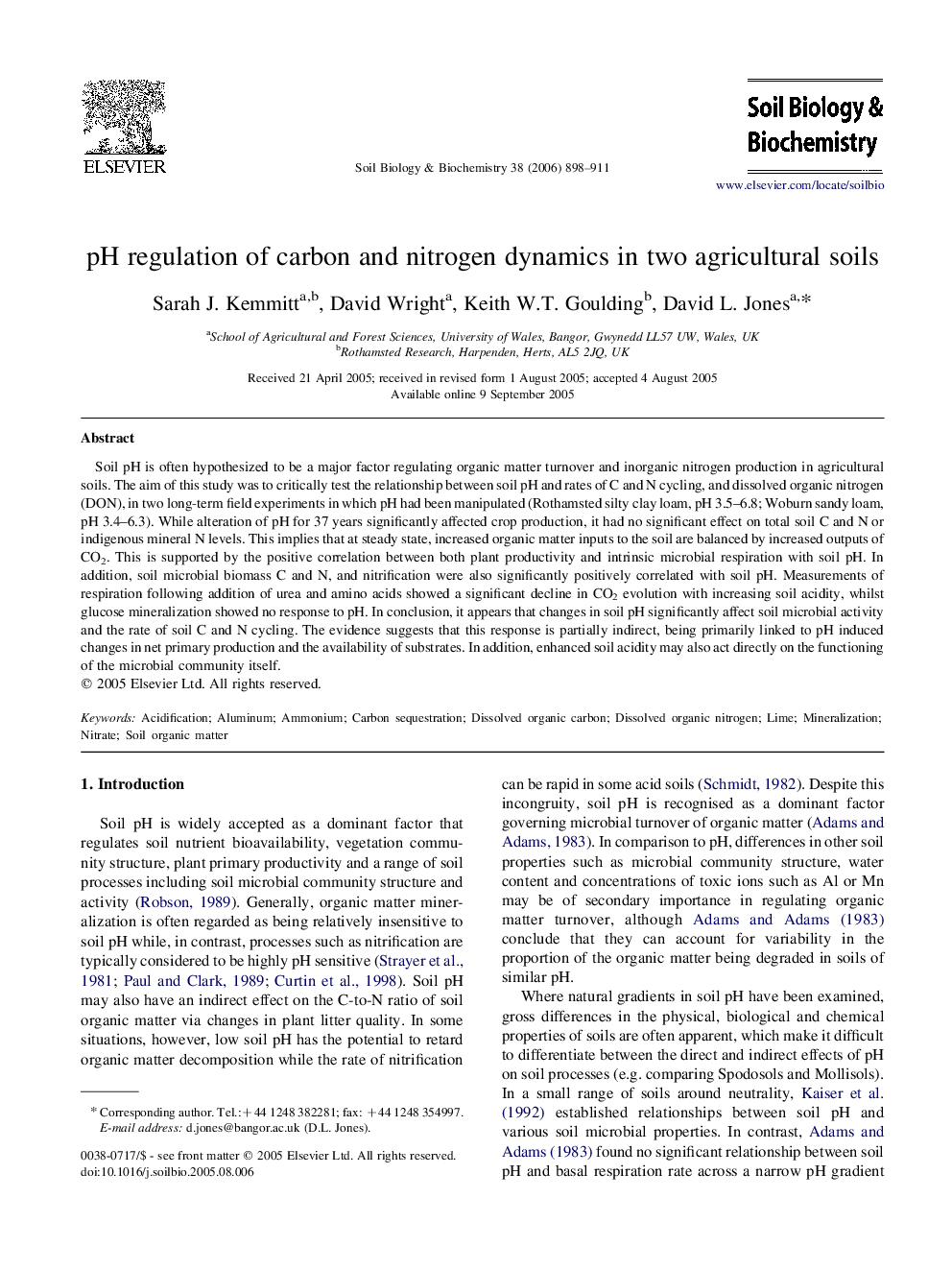| Article ID | Journal | Published Year | Pages | File Type |
|---|---|---|---|---|
| 2026320 | Soil Biology and Biochemistry | 2006 | 14 Pages |
Soil pH is often hypothesized to be a major factor regulating organic matter turnover and inorganic nitrogen production in agricultural soils. The aim of this study was to critically test the relationship between soil pH and rates of C and N cycling, and dissolved organic nitrogen (DON), in two long-term field experiments in which pH had been manipulated (Rothamsted silty clay loam, pH 3.5–6.8; Woburn sandy loam, pH 3.4–6.3). While alteration of pH for 37 years significantly affected crop production, it had no significant effect on total soil C and N or indigenous mineral N levels. This implies that at steady state, increased organic matter inputs to the soil are balanced by increased outputs of CO2. This is supported by the positive correlation between both plant productivity and intrinsic microbial respiration with soil pH. In addition, soil microbial biomass C and N, and nitrification were also significantly positively correlated with soil pH. Measurements of respiration following addition of urea and amino acids showed a significant decline in CO2 evolution with increasing soil acidity, whilst glucose mineralization showed no response to pH. In conclusion, it appears that changes in soil pH significantly affect soil microbial activity and the rate of soil C and N cycling. The evidence suggests that this response is partially indirect, being primarily linked to pH induced changes in net primary production and the availability of substrates. In addition, enhanced soil acidity may also act directly on the functioning of the microbial community itself.
